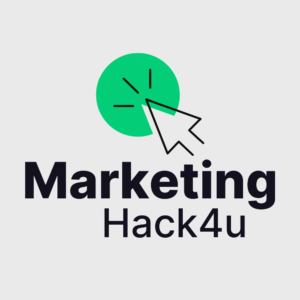In today’s fast-paced digital world, delivering high-quality software quickly is no longer optional—it’s essential. As user expectations rise and development cycles shrink, manual testing and traditional automation frameworks often can’t keep up.
This is where AI testing tools enter the picture. Utilizing artificial intelligence to automate the QA process, these tools allow teams to expand test coverage, decrease maintenance, and enhance release velocity. One of the highlights in this category is testRigor, an AI-driven, no-code automation platform designed for teams with any technical background.
What Are AI Testing Tools?

AI testing tools are software products that leverage artificial intelligence to enhance different facets of software testing. These differ from conventional test automation frameworks that make extensive use of code and static locators (such as XPath or CSS selectors), where AI-based tools intelligently learn and evolve based on the application being tested. They are capable of:
- Generating tests based on user activity automatically
- Healing tests by themselves if UI elements change
- Efficiently executing tests by determining high-risk zones
- Minimize flaky tests through intelligent element recognition
- Make natural language testing available so that automation is open to non-engineers
These tools use machine learning algorithms, natural language processing, and historical data to deliver smarter, more maintainable test suites. As a result, they significantly cut down on the time and effort required to write, execute, and maintain automated tests.
Why AI Testing Tools Matter
- Faster Release Cycles: Agile and DevOps practices demand quick turnarounds. AI testing tools reduce bottlenecks in QA by automating more of the test creation and execution process.
- Better Test Coverage: AI can analyze user behavior and production data to ensure critical paths are tested—something manual test plans often miss.
- Less Breakage: UI updates often cause manual automated tests to break. AI testing tools have the ability to adjust to these updates, cutting down on time QA teams spend repairing scripts.
- Accessibility: AI-based platforms tend to embrace plain English test scripts, allowing test automation to be more accessible for product managers, business stakeholders, and QA analysts.
testRigor: A forefront Example of AI Testing Tools
One of the most powerful and user-friendly AI testing platforms on the market is testRigor. Designed to eliminate the technical barriers of traditional automation tools, testRigor allows users to write end-to-end tests using simple plain English commands.
Key Features of testRigor:
1. Plain English Test Creation
Forget about writing Selenium code or maintaining complex scripts. With testRigor, you can create robust tests like:
click “Login”
enter stored value “email” into “Email Address”
click “Submit”
check that page contains “Welcome back”
This approach dramatically lowers the learning curve and enables faster onboarding for new team members.
2. AI-Powered Test Maintenance
testRigor’s intelligent engine automatically adapts to changes in the UI. If a button’s label or location changes, the test continues to work, avoiding the common issue of brittle selectors breaking the suite.
3. Cross-Platform Coverage
Whether you’re testing web apps, mobile applications, APIs, or even email workflows, testRigor handles it all in a single framework. It also integrates seamlessly with CI/CD pipelines like Jenkins, GitHub Actions, and CircleCI.
4. Scalability and Speed
With built-in parallel execution and cloud-based test infrastructure, testRigor lets you run thousands of tests simultaneously. This drastically reduces feedback time and supports large-scale regression testing.
5. Visual and Audio Testing
Going beyond text, testRigor supports OCR for image validation, audio verification, and even accessibility checks—all through natural language inputs.
Real-World Impact
Companies that switch to testRigor report up to 200x fewer test maintenance hours and achieve over 90% test coverage within months. For example, global telecom company IDT increased test coverage from 34% to 91% in under nine months while reducing their reliance on engineering resources.
SEO Benefits of Adopting AI Testing Tools
For companies focused on optimizing user experience and product reliability—key components of SEO—AI testing tools like testRigor offer multiple benefits:
- Fewer bugs in production improve site performance and reduce bounce rates.
- Faster feature delivery helps respond quickly to market changes and search intent trends.
- Greater coverage ensures all parts of your application are tested, including SEO-critical components like navigation, forms, and metadata rendering.
Ultimately, AI-driven QA contributes to improved Core Web Vitals, better rankings, and a more satisfying user experience.
Conclusion: The Future of QA is AI-Powered
As the demand for rapid, reliable software delivery grows, AI testing tools are becoming indispensable. They provide a smarter, faster, and more scalable approach to quality assurance—one that traditional tools simply can’t match.
Platforms like testRigor are leading the way, enabling teams to write, execute, and maintain tests without writing a single line of code. Whether you’re a startup looking to accelerate your QA process or an enterprise aiming for robust, continuous testing, adopting an AI-powered solution like testRigor is a step toward future-proofing your product quality.

